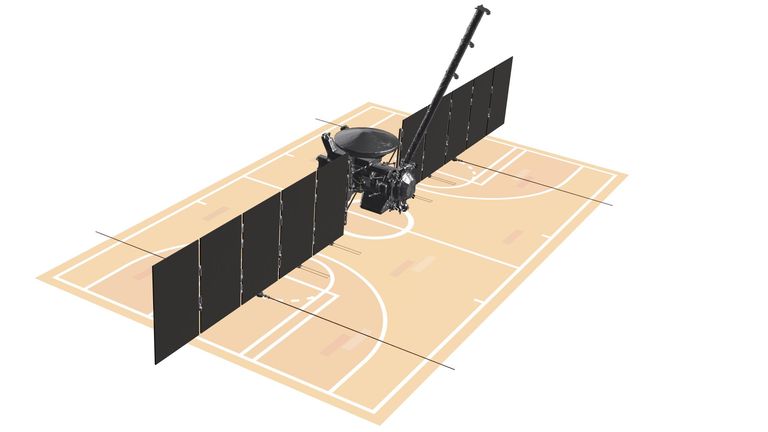A NASA spacecraft has launched from Florida on a mission to establish whether Jupiter's icy moon Europa could support life.
The craft, called Europa Clipper, was on a SpaceX Falcon Heavy rocket which blasted off from Kennedy Space Center in Cape Canaveral.
Its launch had been delayed by the deadly Hurricane Milton which struck the US state last week.
The mission's main scientific goal is to establish whether there are places below the surface of the moon that can harbour life.
Scientists are interested in the salty liquid water ocean that previous observations have shown is under Europa's icy shell.
The craft will carry out 49 close flybys of Europa over three years, gathering detailed measurements to investigate the moon.
It will fly as low as 16 miles above the surface, soaring over a different location during each flyby to scan nearly the entire moon.
Europa Clipper, which is about 30m long, 17m wide and weighs six tonnes, is the largest spacecraft the US space agency has ever built for a planetary mission.

The solar-powered spacecraft, that is carrying nine scientific instruments, will travel 1.8 billion miles in a trip lasting about five and a half years and is due to enter orbit around Jupiter in 2030.
Its solar panels will gather sunlight for powering scientific instruments, electronics and its other subsystems.
NASA said: "The mission's three main science objectives are to understand the nature of the ice shell and the ocean beneath it, along with the moon's composition and geology.
"The mission's detailed exploration of Europa will help scientists better understand the astrobiological potential for habitable worlds beyond our planet," the agency added.
The mission's deputy project scientist Bonnie Buratti, of NASA's Jet Propulsion Laboratory, said: "There is very strong evidence that the ingredients for life exist on Europa. But we have to go there to find out."
Keep up with all the latest news from the UK and around the world by following Sky News
Tap hereThe planetary scientist added: "Just to emphasise: we're not a life-detection mission. We're just looking for the conditions for life."
Disclaimer: The copyright of this article belongs to the original author. Reposting this article is solely for the purpose of information dissemination and does not constitute any investment advice. If there is any infringement, please contact us immediately. We will make corrections or deletions as necessary. Thank you.



